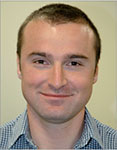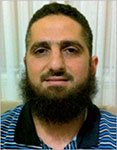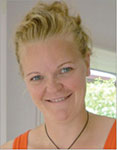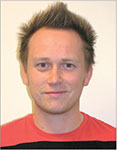Fracture mapping and modelling in shale-gas target in the Cooper Basin, South Australia
Guillaume Backé A , Hani Abul Khair A , Rosalind King A and Simon Holford AUniversity of Adelaide
The APPEA Journal 51(1) 397-410 https://doi.org/10.1071/AJ10025
Published: 2011
Abstract
The success story of a shale-gas reserve development in the United States is triggering a strong industry focus towards similar plays in Australia. The Cooper Basin (located at the border of South Australia and Queensland) and the Otway Basin (extending both onshore and offshore South Australia and Victoria) could be prime targets to develop shale-gas projects.
The Cooper Basin, a late-Carboniferous to mid-Triassic basin, is the largest onshore sedimentary basin producing oil and gas from tight conventional reservoirs with low permeability. Fracture stimulation programs are used extensively to produce the oil and gas. Furthermore, new exploration strategies are now targeting possible commercial gas hosted in low-permeability Permian shale units.
To maximise production, the development of shale-gas prospects requires a good understanding of the:
1. structure of the reservoirs;
2. mechanical properties of the stratigraphy;
3. fracture geometry and density;
4. in-situ stress field; and,
5. fracture stimulation strategies.
In this study, we use a combination of seismic mapping techniques–including horizon and attribute mapping, and an analysis of wellbore geophysical logs–to best constrain the existing fracture network in the basins.
This study is based on the processing and analysis of a 3D seismic cube–the Moomba Big Lake survey–which is located in the southwestern part of the Cooper Basin. This dataset covers an area encompassing both a structurally complex setting in the vicinity of a major fault to the SE of the survey, and an area of more subtle deformation corresponding to the southernmost part of the Nappamerri Trough.
Structural fabrics trending ˜NW–SE and NE–SW, which are not visible on the amplitude seismic data, are revealed by the analysis of the seismic attributes–namely a similarity (equivalent to a coherency cube), dip steering and maximum curvature attributes. These orientations are similar to those of natural fractures mapped from borehole images logs, and can therefore be interpreted as imaging natural fractures across the Moomba-Big Lake area. This study is the first of its kind able to detect possible fractures from seismic data in the Cooper Basin. The methodology developed here can offer new insights into the structure of sedimentary basins and provide crucial parameters for the development of tight reservoirs.
In parallel, a tentative forward model of the generation of a fracture network following a restoration of the Top Roseneath horizon was carried out. The relatively good correlation between the fracture orientations generated by the model and the fractures mapped from geophysical data shows that fractures in the Moomba-Big Lake area may have formed during either a N–S compressive principal horizontal stress, or an E–W compressive principal horizontal tectonic stress regime. In addition, the orientations of the fracture interpreted through this study are also compatible with a generation under the present day stress regime described in this part of the basin, with an maximal horizontal stress trending E–W.

Guillaume Backé is a structural geologist with an expertise in seismic interpretation, three-dimensional geomodelling and geomechanical modelling. He joined the Australian School of Petroleum in May 2009, following a two year Post Doctoral research position at the Centre for Mineral Exploration Under Cover (CMXUC) of the University of Adelaide. He obtained a Master of Geophysics at the University of Toulouse III in France in June 2002, and completed a PhD at the University of Pau et des Pays de l’Adour in December 2006 with a dissertation on the tectonic evolution of the Venezuelan Andes (Venezuela), the Southern Central Andes and the Neuquén basin (Argentina). His main research focus is in the integration of geophysics and geology for the construction of accurate and validated three-dimensional models of the earth’s sub-surface, in particular for petroleum, geothermal or geological storage of carbon dioxide applications. guillaume.backe@adelaide.edu.au |

Hani Abul Khair received his BSc (Earth and environmental sciences), his MSc (sedimentology) and his PhD (petroleum geosciences) at the University of Jordan, Jordania. He worked as petroleum geoscientist with Target exploration UK, before taking a postdoctoral position at the University of Jordan. In 2010, he joined the Australian School of Petroleum as a research associate focused on a shale gas project funded by Primary Industries and Resources SA (PIRSA). His expertise encompasses sedimentary geology, sequence stratigraphy, seismic interpretation, petrophysics, geomechanics, and basin analysis. Member: PESA (SA), AAPG. habulkhair@asp.adelaide.edu.au |

Dr Rosalind King successfully completed her BSc (Hons) and PhD at the University of Liverpool in 2001 and 2005. Her PhD research was the structural evolution of the Cape Fold Belt, South Africa. She worked as a postdoctoral researcher at the Australian School of Petroleum (UA) from 2005–10 studying the present-day stresses of North West Borneo and delta–deepwater fold-thrust belts. Rosalind is a lecturer in the School of Earth and Environmental Sciences (UA) and her research includes the tectonics of deepwater fold-thrust belts, detachments, fold and thrust mechanics and petroleum geomechanics. Ros is the vice president of SA PESA. Member: GSL, AAPG and PESA. rosalind.king@adelaide.edu.au |

Simon Holford is an ARC Australian Postdoctoral Fellow and lecturer at the Australian School of Petroleum and is Deputy Director of the Centre for Tectonics, Resources and Exploration (TRaX) at the University of Adelaide. He graduated with a BSc (Hons) from Keele University (2001) and a PhD from the University of Birmingham (2006). His research interests are in the deformation, uplift and magmatic evolution of rifted margins, sedimentary basins, and continental interiors and their impact on hydrocarbon exploration. Member: AGU, ASEG, GSA, GSL and PESA. simon.holford@adelaide.edu.au |


